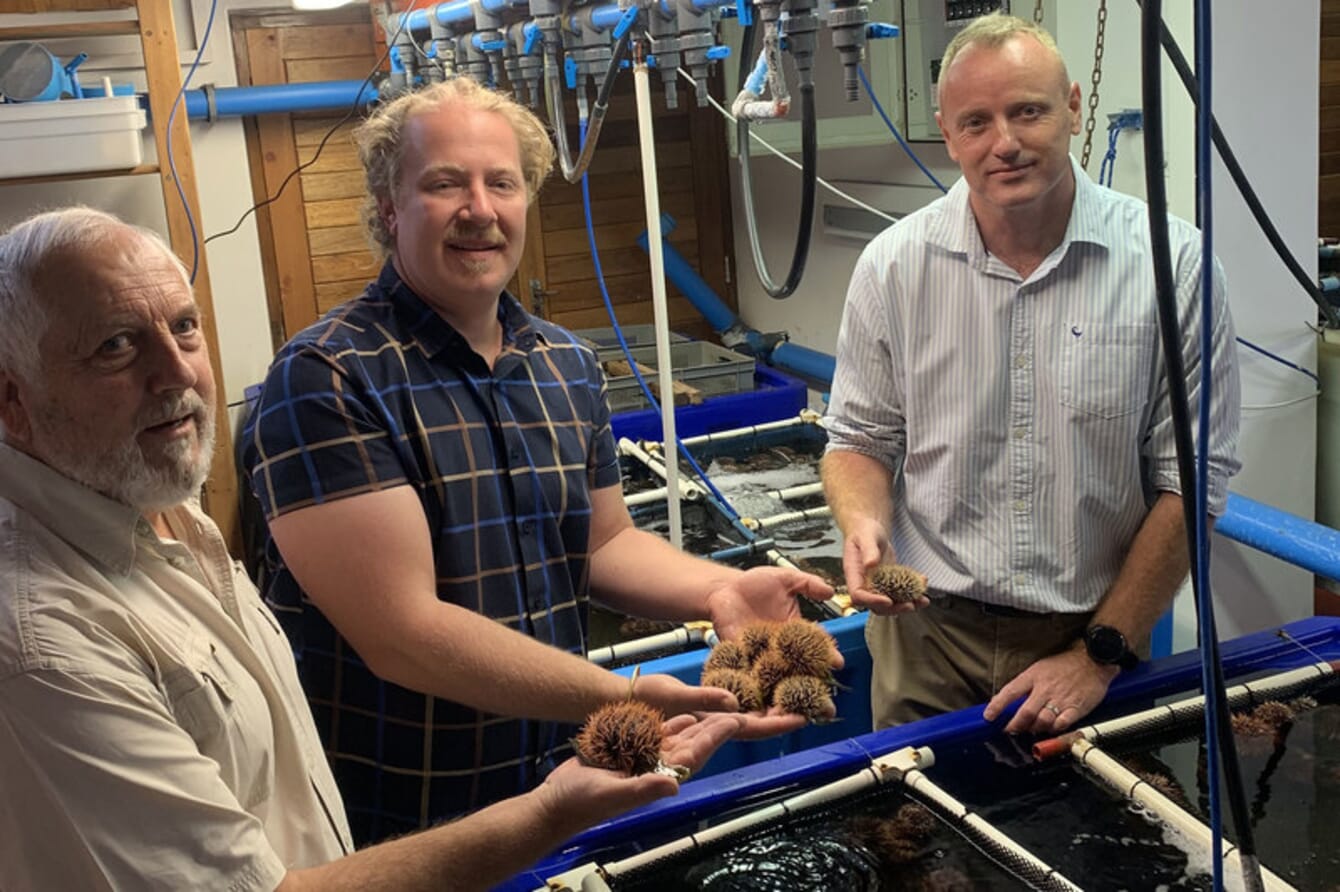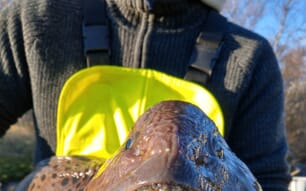
Prof John Bolton, Dr Mark Cyrus and Dr Brett Macey holding collector sea urchins (Tripneustes gratilla) grown from larvae at the Marine Research Aquarium © Alick Hendricks
The country's aquaculture industry is currently dominated by abalone, often farmed using IMTA, and other high-value species such as mussels, oysters and trout. Echinoculture – the farming of sea urchins – offers new possibilities.
The project includes a team of three University of Cape Town (UCT)-affiliated researchers, who are looking into ways to raise sea urchin (Tripneustes gratilla). These are Emeritus Professor John Bolton and research associates Dr Mark Cyrus and Dr Brett Macey of the national Department of Forestry, Fisheries and the Environment (DFFE).
According to a press release from UCT, the project will build on previous sea urchin aquaculture research by Dr Cyrus and the team that has successfully developed innovative hatchery and grow-out technologies. The IMTA process will be adapted to maximise sea urchin farming conditions.
Surge in demand
The popularity of urchin roe (known as “uni” and often eaten as sashimi) has rocketed in recent years and Japan consumes 80 percent of it. As demand for sea urchins grows, so too does pressure on wild harvesting. For this reason, the team is hoping the successes of abalone farming can be replicated with urchins, grown from larvae.
A pilot system is being built at Viking Aquaculture’s Buffeljags Abalone Farm, where abalone is currently farmed alongside Ulva rigida (sea lettuce).
The IMTA research at Buffeljags is part of a far larger initiative involving a multi-laboratory project, All Atlantic Ocean Sustainable, Profitable and Resilient Aquaculture (ASTRAL), a European Union Horizon 2020-funded project that focuses on IMTA farming. ASTRAL aims to develop sustainable value chains for aquaculture across the Atlantic area. Other laboratories have been established in the United Kingdom, Ireland and South America. The project will run until 2024.
“Some tasks are carried out at the Marine Research Aquarium in Sea Point, and commercial-scale studies are carried out at the aquafarm at Buffeljags,” said Bolton.
A team project
Their partnership combines complementary research fields. Bolton is a seaweed biologist and an expert on the integrated aquaculture of Ulva on commercial abalone farms. In the early 2000s he was the South African partner on two SA/Sweden projects exploring this type of aquaculture.
Macey is a molecular biologist with an interest in the role of microorganisms in the health of aquatic organisms and their environment, and the DFFE co-leader of the South African IMTA laboratory. He is responsible for monitoring the microbial communities of the IMTA systems to provide information on biosecurity.
Cyrus is an aquaculture researcher and larval biologist, and a control scientist technician at the DFFE. His research looks to improve production technologies and to develop feeds and feed additives (probiotic and seaweed-supplemented diets) as well as IMTA technology for farmed aquatic animals, especially sea urchins.


